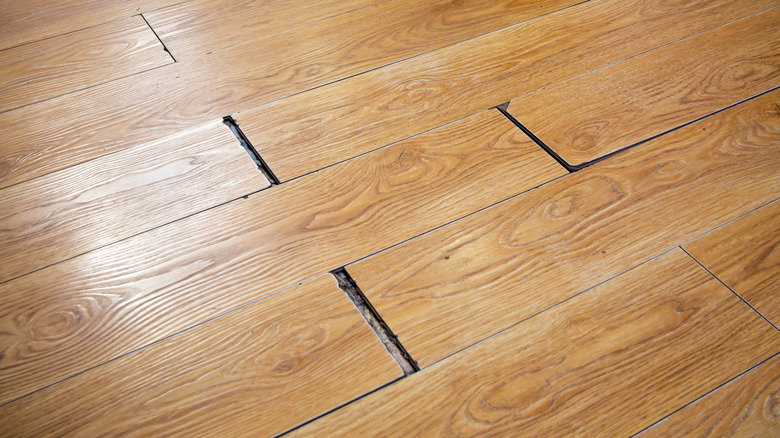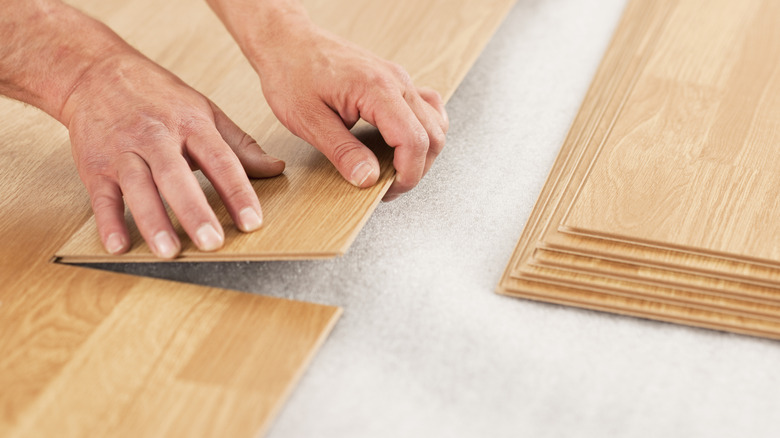Why Your Laminate Floors Are Separating And How To Prevent It
Homeowners often choose laminate floors due to their affordability, durability, easy installation, and variety of styles. While these floors can last from 15 to 25 years, they are not invincible from having some problems. One of the most common laminate flooring issues is separation, where gaps appear between the planks, exposing the subfloor.
There are many reasons why laminate flooring may separate and cause gaps. If the gap is small (⅛ of an inch or less), the gaps could be caused by seasonal temperature fluctuations, which are considered normal. If the gap is medium-sized, or between ⅛ and ¼ of an inch, you might be looking at humidity level issues. And if you have large-sized gaps, or anything more than ¼ of an inch, your floors were most likely poorly installation.
The size of the gap truly tells the story of why your laminate floors are separating and what you can do to prevent it in the future. Before giving up on this practical flooring option, you need to know when a gap is considered a problem.
The lowdown on why laminate floors separate
Believe it or not, it's considered completely normal for laminate floors to have minor expansion and contraction throughout the year. This type of flooring is porous, meaning that it absorbs and releases moisture from the surrounding air, leading to slight dimensional changes. You'll notice that when the room is humid, the planks will expand, and then when it is dry, they will contract back down. Typically, these gaps are ⅛ of an inch or less (provided the planks were installed correctly) and are nothing to be concerned about.
Medium-sized gaps are generally caused when there's a drastic shift in humidity. Because the planks take on the extra moisture in a high-humidity environment, they'll naturally keep expanding. Once the humidity levels dramatically shift down, these expanded boards will shrink back down, leaving more significant gaps and separation than what's considered normal.
The biggest reason for significant separation of your laminate floors is poor installation. There's quite a bit you need to know to install laminate flooring, primarily when it comes to acclimation of the planks and how to lay them properly. Laminate flooring needs space around the room's edges to accommodate its movement — this space is known as an expansion gap. The general rule of thumb is to allow a gap that is the same thickness as the plank, which will be around 10 millimeters. However, if the planks have not been adequately acclimatized to the climate, which is a minimum of 48 hours, your gap spacing will be off, and the flooring will either expand too much and buckle or contract too much and leave excessive gaps.
How to avoid separation in your laminate flooring
Acclimating the planks to your home's environment is a crucial step you don't want to skip during a laminate floor installation. You'll need to lay out your plank boxes in the room they will be installed for at least 48 hours, but leaving them to rest for 72 hours is preferred. You can leave the planks in the box to do this, but make sure that you lay them flat on the floor. This allows them to fully adjust to your home's humidity levels — skip this step, and you risk problems like separation, warping, and cupping.
Another way to prevent separation is to purchase good quality materials. While all laminate flooring absorbs some moisture, lower-quality laminate flooring tends to be more unstable, absorbing more water than higher-quality options. This leads to a more significant risk of separating and other quality issues.
You'll also want to ensure that you have stable humidity and temperatures in the room you'll install the laminate flooring, both before and after installation. Since laminate flooring is sensitive to humidity fluctuations, you'll want to aim for a consistent indoor humidity level, ideally between 30% and 50%, and a temperature between 60 and 80 degrees Fahrenheit. If you need to, you can use a dehumidifier to draw out any additional moisture in your room.


